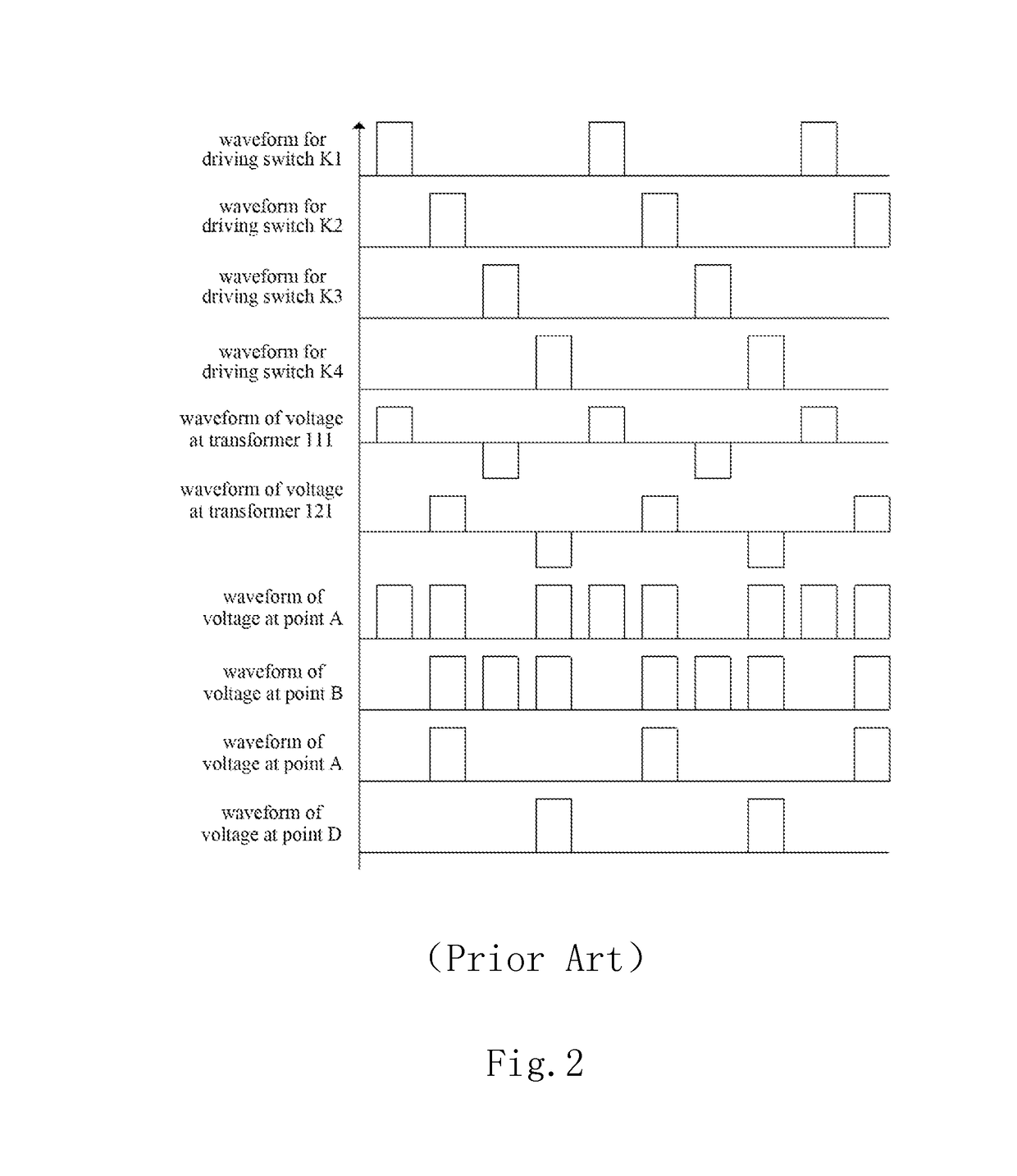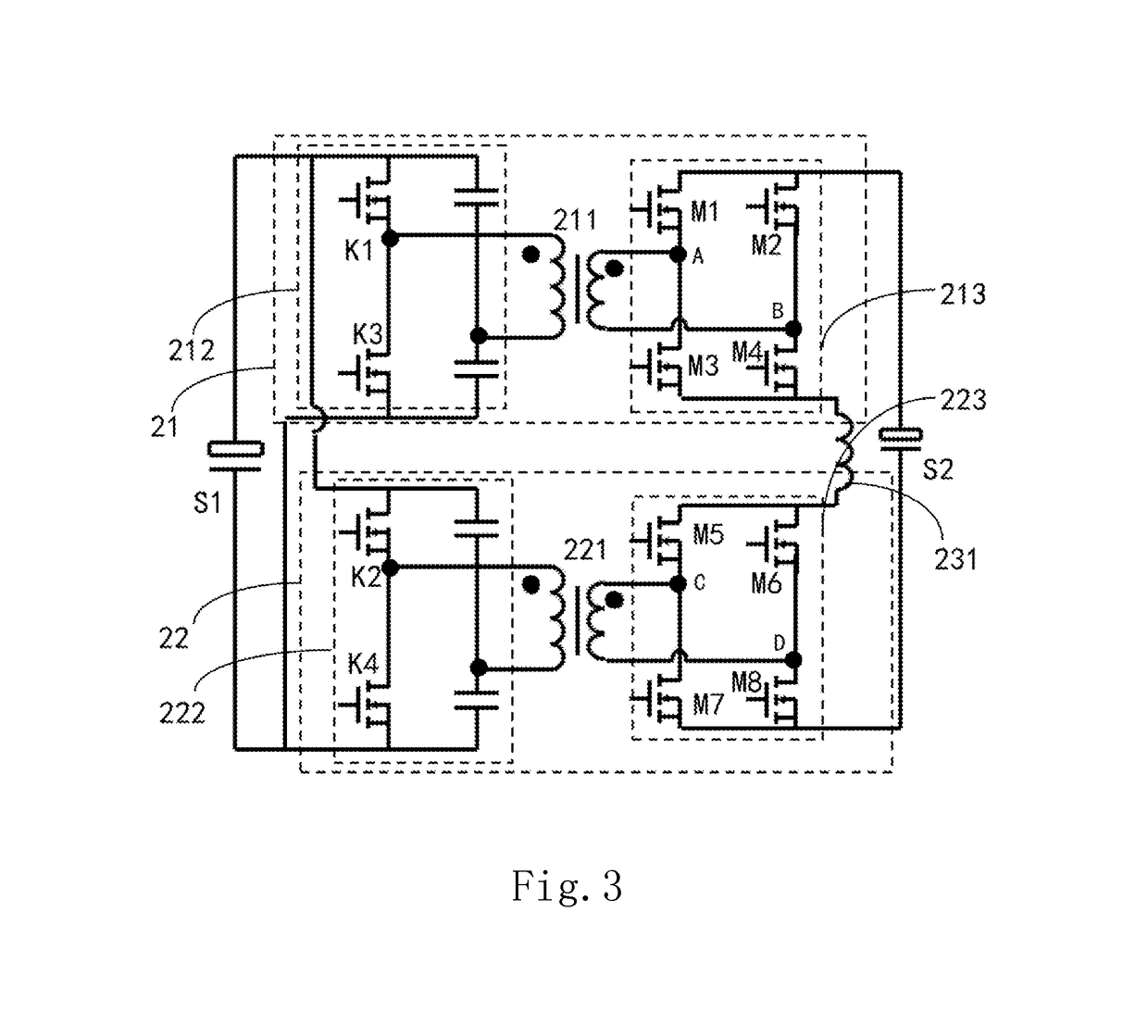Dc-to-dc converter circuit and circuit board layout structure for the same
- Summary
- Abstract
- Description
- Claims
- Application Information
AI Technical Summary
Benefits of technology
Problems solved by technology
Method used
Image
Examples
first embodiment
[0022]a DC-to-DC converter circuit according to the present application will be described below.
[0023]Referring to FIG. 3, FIG. 3 is a schematic diagram of the first embodiment of the DC-to-DC converter circuit according to the present application. As shown in FIG. 3, the DC-to-DC converter circuit according to the present application is electrically connected between a first power supply side 51 and a second power supply side S2. The converter circuit comprises a first branch 21, a second branch 22, and a first inductor 231. The primary sides of the first branch 21 and the second branch 22 are coupled to the first power supply side 51. The secondary sides of the first branch 21 and the second branch 22 are coupled to the second power supply side S2. The secondary sides of the first branch 21 and the second branch 22 are connected in series via the first inductor 231.
[0024]The first branch 21 comprises a first transformer 211, a first primary switching circuit 212, and a first secon...
second embodiment
[0030]a DC-to-DC converter circuit according to the present application will be described below.
[0031]Referring to FIG. 6, FIG. 6 is a schematic diagram of the second embodiment of the DC-to-DC converter circuit according to the present application. The structure of the converter circuit shown in FIG. 6 is substantially the same as that shown in FIG. 3. Thus, the description for similar elements in FIGS. 6 and 3 will be omitted here. The following description mainly focuses on the difference between them. The converter circuit shown in FIG. 6 further comprises a third branch 24 and a second inductor 232. The primary sides of the first branch 21, the second branch 22, and the third branch 24 are electrically connected, and then coupled to the first power supply side S1. The secondary sides of the first branch 21, the second branch 22, and the third branch 24 are coupled to the second power supply side S2. The secondary sides of the first branch 21 and the second branch 22 are connect...
third embodiment
[0039]a DC-to-DC converter circuit according to the present application will be described below.
[0040]Referring to FIG. 7, FIG. 7 is a schematic diagram of the third embodiment of the DC-to-DC converter circuit according to the present application. As shown in FIG. 7, each the first branch 21 and the second branch 22 may have a forward topology structure, such as an active-clamped forward topology structure. The primary sides of the first branch 21 and the second branch 22 are coupled to the first power supply side S1. The secondary sides of the first branch 21 and the second branch 22 are coupled to the second power supply side S2. The secondary sides of the first branch 21 and the second branch 22 are connected in series via the first inductor 231.
[0041]Further, the first primary switching circuit 212 of the first branch 21 comprises two switching tubes K1 and K3. The second primary switching circuit 222 of the second branch 22 comprises two switching tubes K2 and K4. The phase di...
PUM
 Login to view more
Login to view more Abstract
Description
Claims
Application Information
 Login to view more
Login to view more - R&D Engineer
- R&D Manager
- IP Professional
- Industry Leading Data Capabilities
- Powerful AI technology
- Patent DNA Extraction
Browse by: Latest US Patents, China's latest patents, Technical Efficacy Thesaurus, Application Domain, Technology Topic.
© 2024 PatSnap. All rights reserved.Legal|Privacy policy|Modern Slavery Act Transparency Statement|Sitemap



